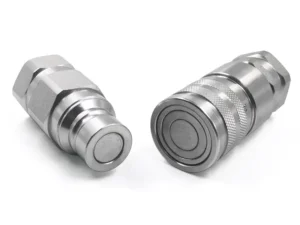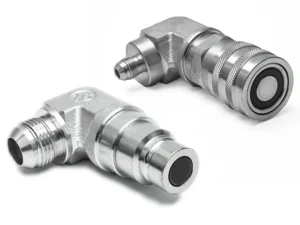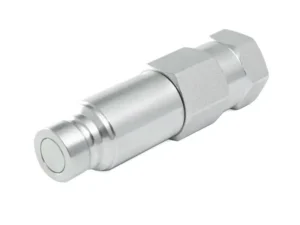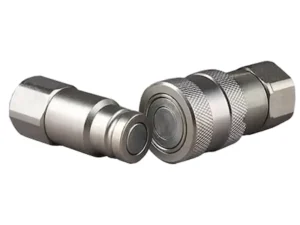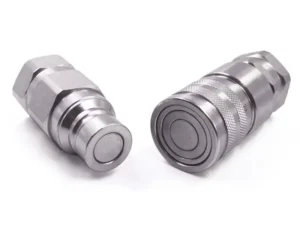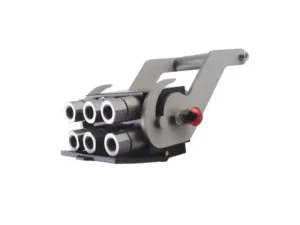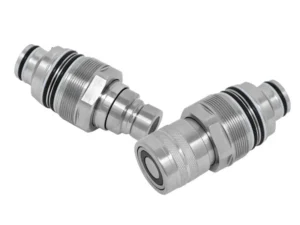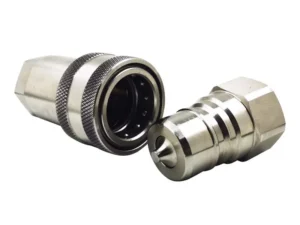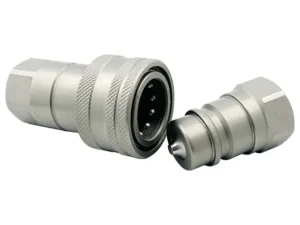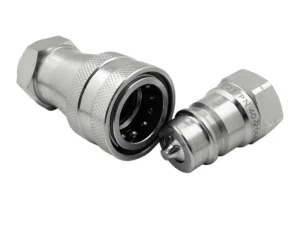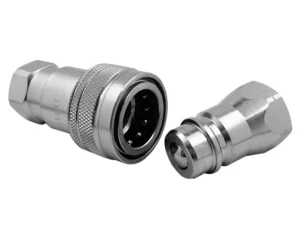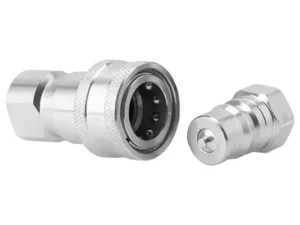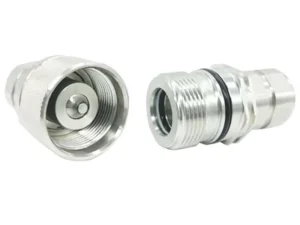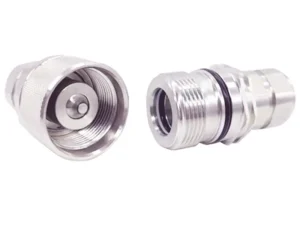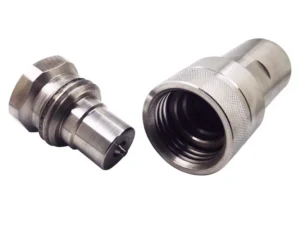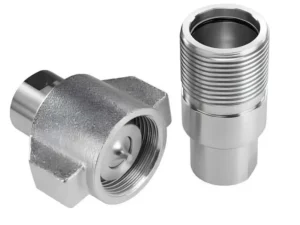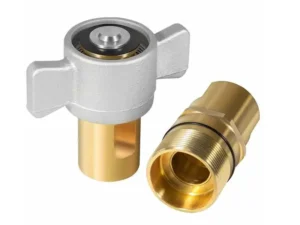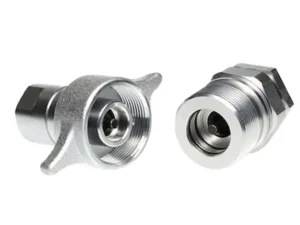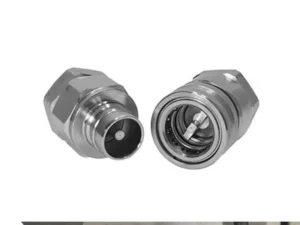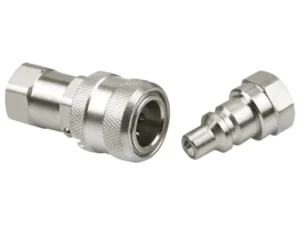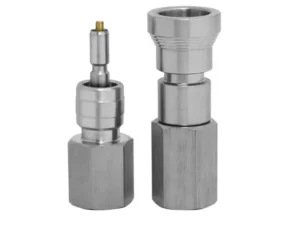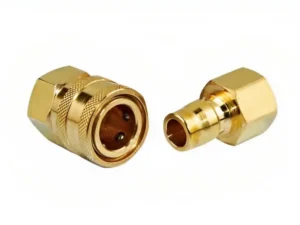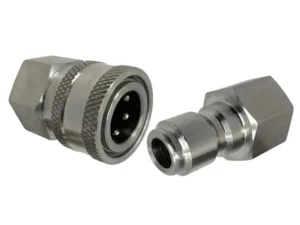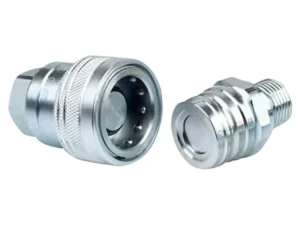How to choose material
Right Body Material for the hydraulic quick couplings
Hydraulic Quick Couplings
Hydraulic quick couplings, which are essential components in hydraulic systems allowing quick and easy connections or disconnections of fluid lines, are made from various materials depending on the application requirements.
Main materials used for the body of hydraulic quick couplings
- Steel: Often carbon steel or stainless steel, known for its high strength and durability. Stainless steel is preferred in corrosive environments or applications requiring high cleanliness.
- Brass: Commonly used for its good corrosion resistance, especially in water-based fluids. Brass is also known for its ease of machining.
- Aluminum: Selected for its lightweight properties, making it suitable for mobile or weight-sensitive applications. It also offers good corrosion resistance.
- Plastic: High-performance plastics like POM (Polyoxymethylene) or PVDF (Polyvinylidene Fluoride) are used in applications requiring chemical resistance, lower cost, or reduced weight.
These materials are chosen based on factors such as pressure rating, temperature range, fluid compatibility, and environmental conditions.
Choosing the right body material for hydraulic quick couplings involves considering several key factors to ensure compatibility, durability, and safety for the specific application.
1. Fluid compatibility:
Ensure the material is compatible with the hydraulic fluid used in the system. Some fluids may be corrosive or reactive with certain materials.For example, stainless steel is resistant to a wide range of chemicals, whereas brass is suitable for water-based fluids.
- Chemical resistance: The coupling material must be compatible with the fluid it will transport. Consider factors like acidity, alkalinity, solvent properties, and potential for corrosion. Check compatibility charts provided by manufacturers or consult a chemical engineer for complex fluids.
- Temperature range: The material should withstand the expected temperature range of the fluid, both operating and peak temperatures. Some materials become brittle or deform at high temperatures, while others lose strength or leach chemicals at low temperatures.
2. Pressure Rating
Check the material’s pressure rating to ensure it can withstand the operating pressures of your hydraulic system. Steel and stainless steel typically offer higher pressure ratings than aluminum or plastic.
- Carbon Steel: Carbon steel offers a good balance of strength and durability. It can withstand the high pressures encountered in hydraulic systems without being excessively brittle. Carbon steel is a relatively inexpensive material compared to alternatives like stainless steel. This makes it a practical choice for manufacturers, keeping the overall cost of the couplings down. Hydraulic quick couplings made from carbon steel can function effectively across a wide range of temperatures, thanks to the use of seals like FKM (Viton). This makes them suitable for various hydraulic applications.
- Stainless Steel: While carbon steel is generally the go-to material for hydraulic quick couplings due to cost and versatility, stainless steel offers some distinct advantages, like Superior Corrosion Resistance,Increased Durability, Hygiene and Cleanliness. a stainless steel coupling could potentially achieve the same working pressure as a carbon steel coupling with a thinner wall. then it would be lighter than the carbon steel.
- Brass is a popular material for certain types of quick couplings, but generally not for high-pressure hydraulic applications. Brass offers good strength and durability, but not at the same level as carbon steel or stainless steel. Brass provides better corrosion resistance than plain carbon steel, although not quite matching stainless steel. Similar to carbon steel, brass is a more affordable material compared to stainless steel. Brass is known for its excellent machinability, making it easier to manufacture intricate parts for quick couplings with complex designs.
- Aluminum: they usually use for the light-duty application, which need the light weight.
- Plastic: we did not have experience on this type of quick couplings
3. Application requirements:
- Pressure rating: Choose a material with a pressure rating exceeding the maximum pressure in the system. This ensures safe operation and prevents leakage under pressure spikes.
- Flow rate: Select a material with adequate flow capacity to avoid restricting the desired flow rate. Materials with low friction or wider internal diameters often offer better flow characteristics.
- Environmental factors: Consider the environment where the couplings will be used. Factors like UV exposure, humidity, salinity, or presence of contaminants can affect material performance. Opt for materials with inherent resistance to these conditions for long-term durability.
3. Material options:
- Metals: Stainless steel is a popular choice for its strength, corrosion resistance, and wide temperature range. Brass offers good corrosion resistance and machinability but lower strength. Steel is cost-effective but prone to rust.
- Plastics: Nylon and PVDF offer good chemical resistance, lightweight characteristics, and are often inexpensive. PTFE boasts excellent chemical resistance and high-temperature tolerance but can be costly.
4. Additional considerations:
- Cost: Compare the cost of different materials considering both initial purchase and potential maintenance or replacement needs.
- Weight: If weight is a critical factor, consider lightweight materials like plastics or aluminum.
- Ease of assembly and maintenance: Some materials require specialized tools or procedures for installation or repair. Choose options that suit your available resources and expertise.
By evaluating these factors, you can select a body material for hydraulic quick couplings that will provide optimal performance and longevity in your specific application. Consulting with manufacturers’ specifications and possibly conducting material compatibility tests can also provide further assurance in your selection process.
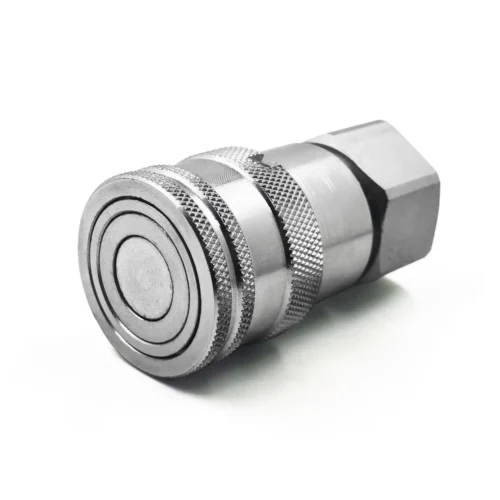 3/4" Thread 5/8" Body Size FF Series ISO 16028 Flat Face Quick Couplings - NPT3/4, Female
3/4" Thread 5/8" Body Size FF Series ISO 16028 Flat Face Quick Couplings - NPT3/4, Female 